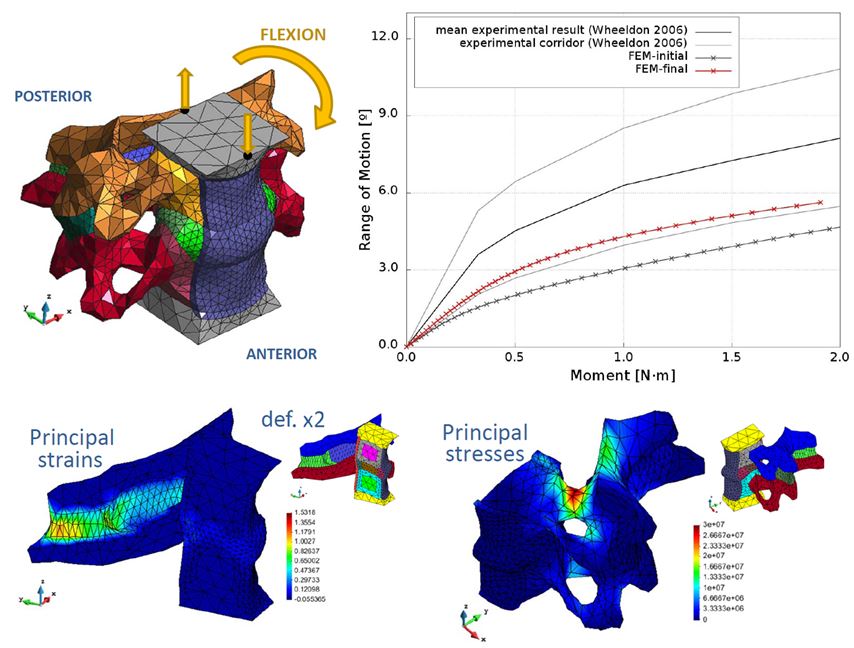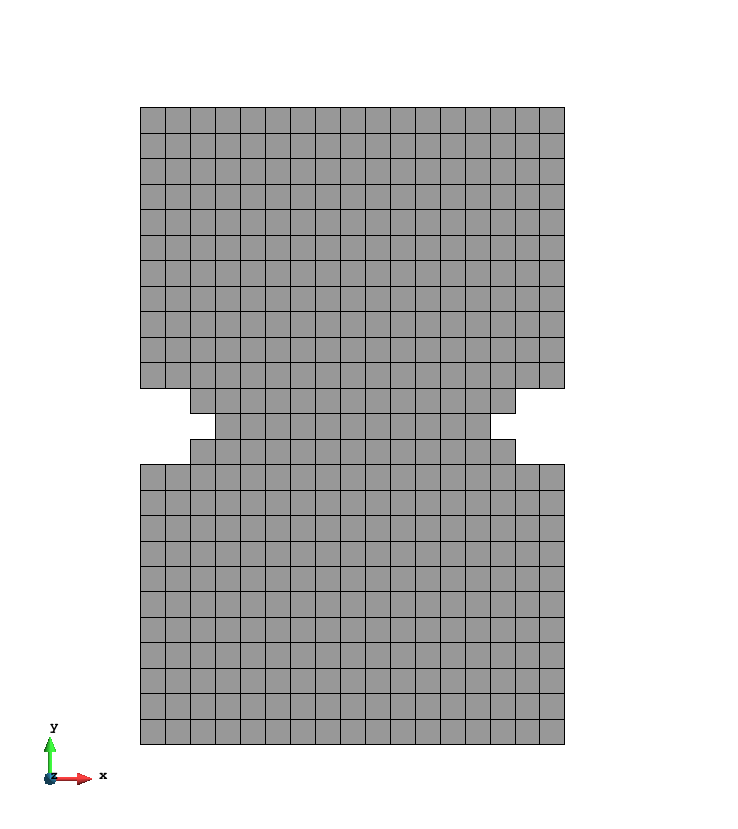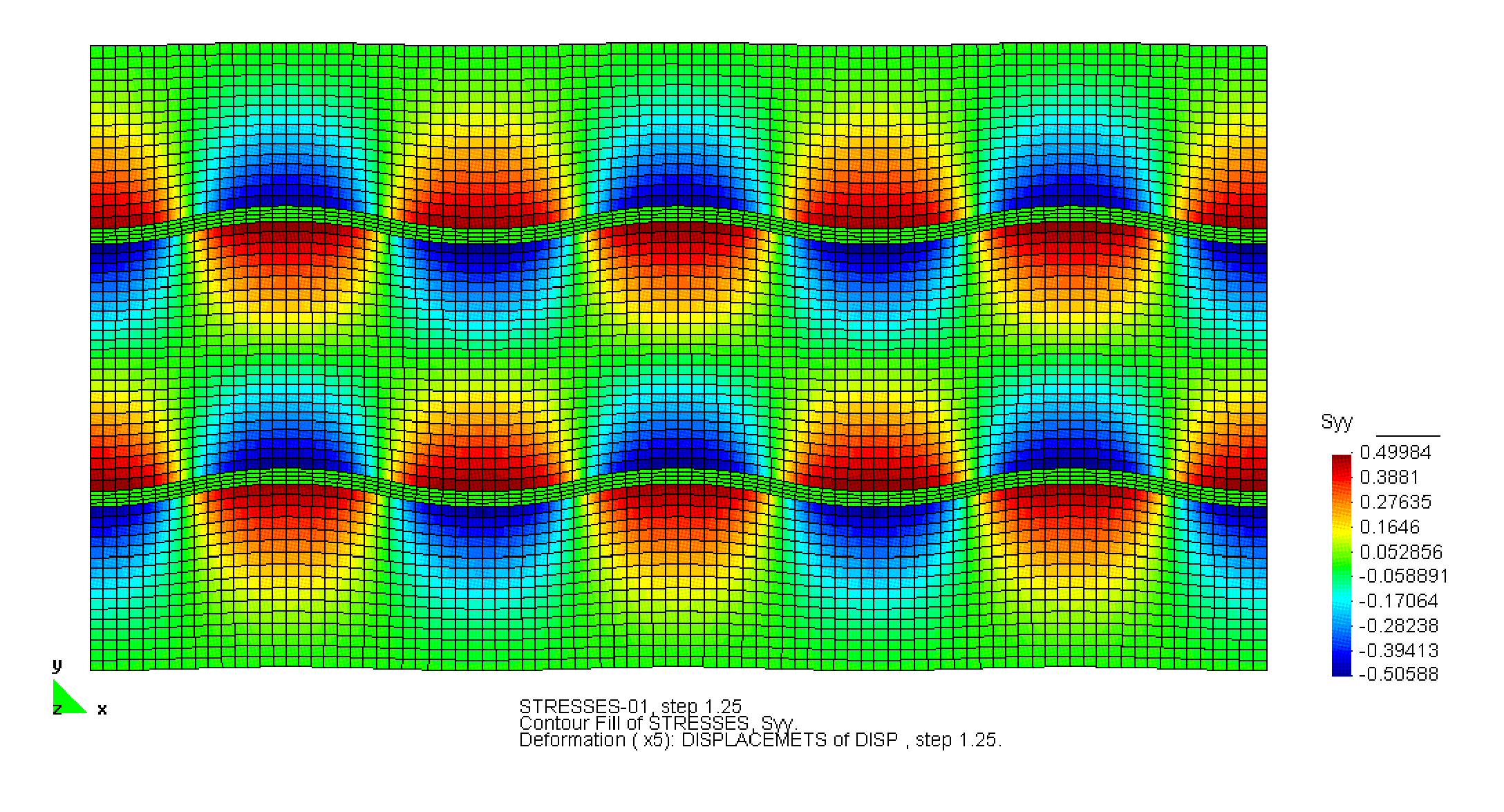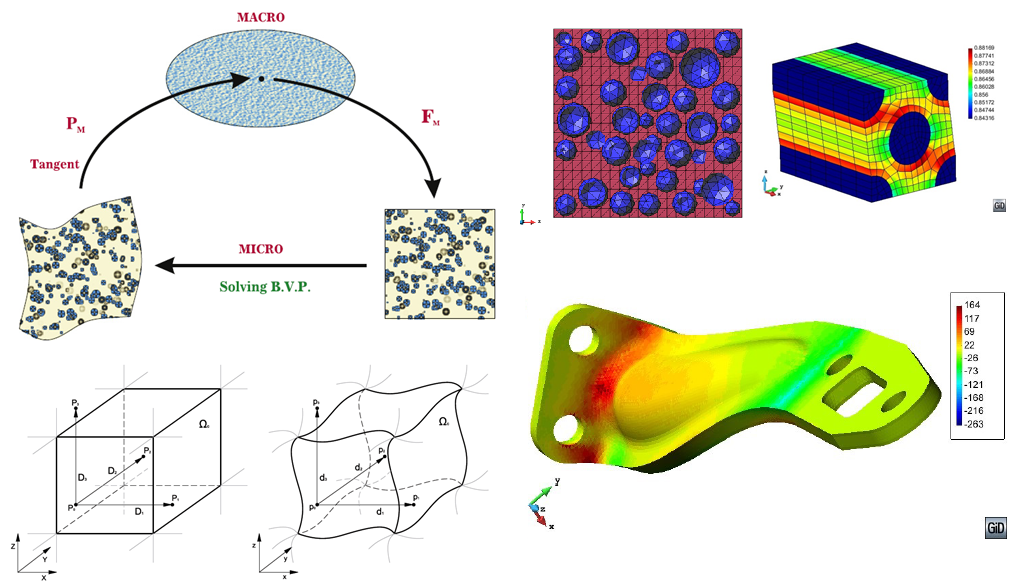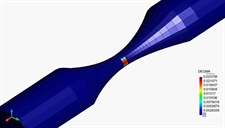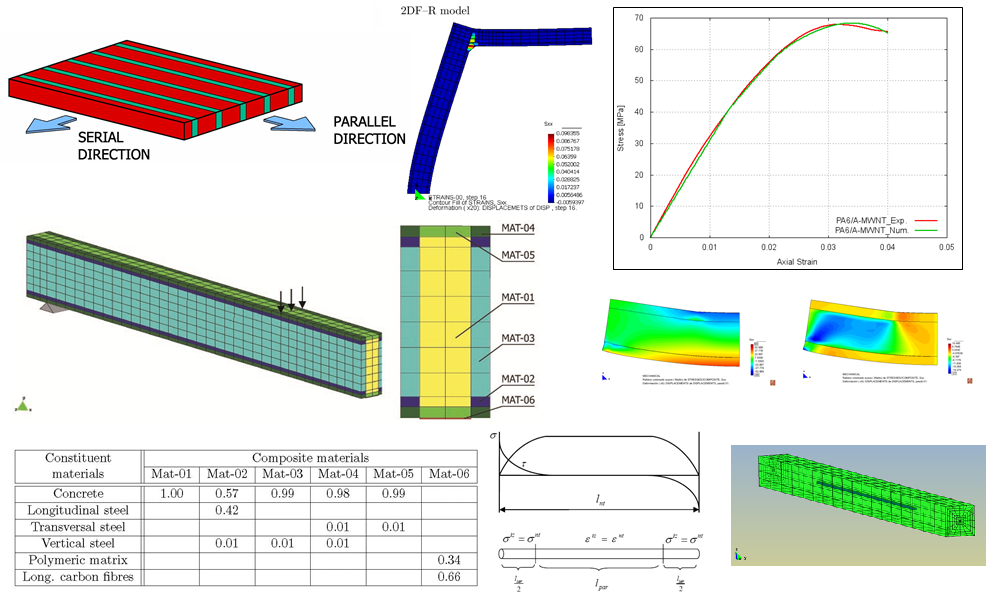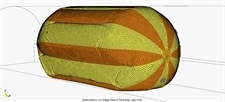|
Inverse methods for the determination of material parameters using optimization techniques
A common difficulty encountered when modelling biological tissues is determining the correct material parameters for the constitutive models used to represent their behaviour. Unlike inert tissues, biological tissues are difficult to characterize by means of traditional mechanical testing techniques. Although these types of tests are certainly used, they provide the properties of ex-vivo tissues, outside their working environment and, thus, their utility is somewhat limited in some cases. In addition, most material models used to represent the behavior of tissues are defined based on material parameters which do not have a direct physical sense, for example, the six parameters required to define an Ogden hyperelastic model. When trying to validate the FE model of a cervical spine as part of my doctoral research, we found that the material parameters extracted from literature did not reproduce adequately the behavior of the cervical spine in the standard flexo-extension experimental tests used to validate numerical models. We knew the results we were seeking, since these tests provide experimental corridors a healthy cervical spine is supposed to fall into, but did not have the adequate value of the Ogden material parameters used to reproduce the behavior of the ligaments in the spine. Then, coupling the FE model in PLCd with a code developed in Matlab using its Optimization Toolbox, we are developing a methodology which allows determining the ligament Ogden material parameters that result in the expected healthy flexo-extension behavior of the cervical spine. The idea of using inverse methods to determine certain unknown information is a common practice in different engineering fields and is , in fact, a computational discipline in its own. In the framework of TCAiNMaND project, we had the opportunity to apply the same principle used in the determination of the ligament properties, to determine the value of material properties in damaged composite structures.
|
|

